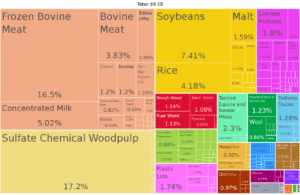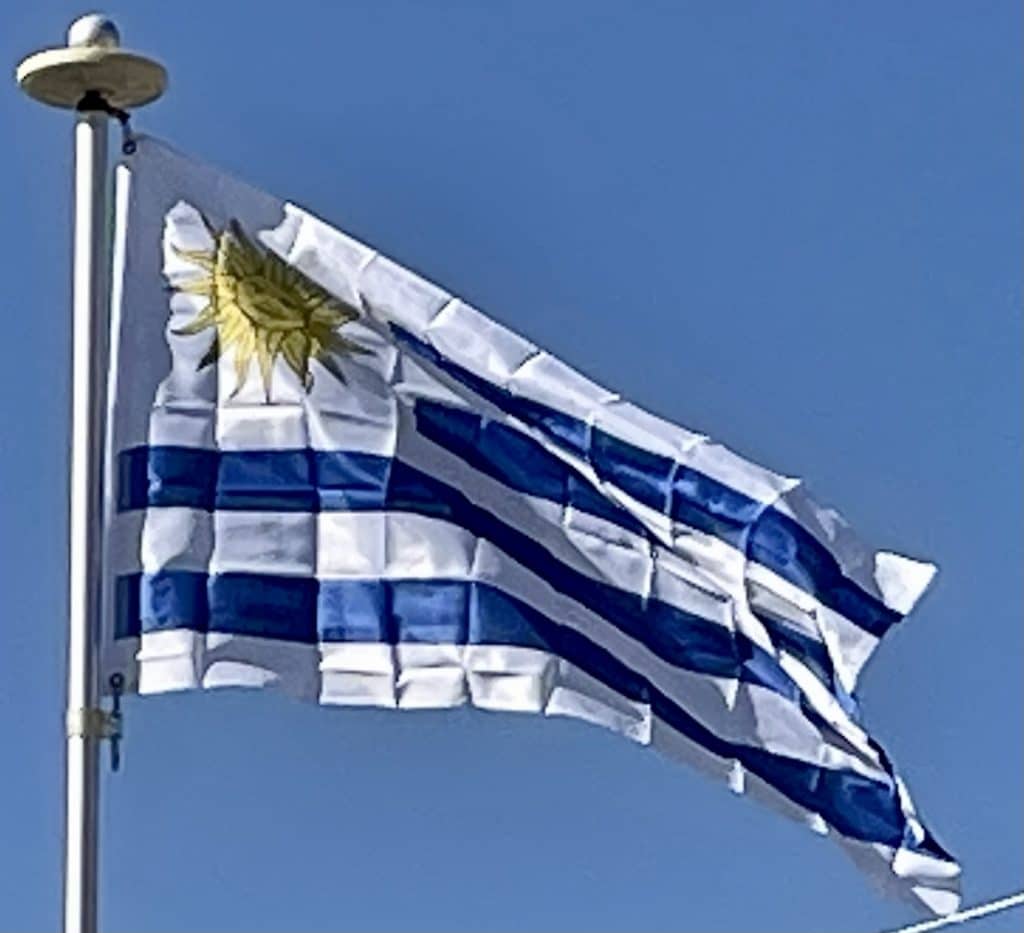Montevideo is the southernmost capital city in the Americas, and the third most southerly in the world (only Canberra and Wellington are further south). Uruguay is the only country in South America situated entirely south of the Tropic of Capricorn.
There are ten national parks in Uruguay: Five in the wetland areas of the east, three in the central hill country, and one in the west along the Rio Uruguay.
Economy:
Uruguay experienced a major economic and financial crisis between 1999 and 2002, principally a spillover effect from the economic problems of Argentina. The economy contracted by 11%, and unemployment climbed to 21%. Despite the severity of the trade shocks, Uruguay’s financial indicators remained more stable than those of its neighbors, a reflection of its solid reputation among investors and its investment-grade sovereign bond rating, one of only two in South America.

In 2004, the Batlle government signed a three-year $1.1 billion stand-by arrangement with the International Monetary Fund (IMF), committing the country to a substantial primary fiscal surplus, low inflation, considerable reductions in external debt, and several structural reforms designed to improve competitiveness and attract foreign investment. Uruguay terminated the agreement in 2006 following the early repayment of its debt but maintained a number of the policy commitments.
Vázquez, who assumed the government in March 2005, created the Ministry of Social Development and sought to reduce the country’s poverty rate with a $240 million National Plan to Address the Social Emergency (PANES), which provided a monthly conditional cash transfer of approximately $75 to over 100,000 households in extreme poverty. In exchange, those receiving the benefits were required to participate in community work, ensure that their children attended school daily, and had regular health check-ups.
Following the 2001 Argentine credit default, prices in the Uruguayan economy made a variety of services, including information technology and architectural expertise, once too expensive in many foreign markets, exportable. The Frente Amplio government, while continuing payments on Uruguay’s external debt, also undertook an emergency plan to attack the widespread problems of poverty and unemployment. The economy grew at an annual rate of 6.7% during the 2004–2008 period. Uruguay’s exports markets have been diversified to reduce dependency on Argentina and Brazil. Poverty was reduced from 33% in 2002 to 21.7% in July 2008, while extreme poverty dropped from 3.3% to 1.7%.
Between the years 2007 and 2009, Uruguay was the only country in the Americas that did not technically experience a recession (two consecutive downward quarters). Unemployment reached a record low of 5.4% in December 2010 before rising to 6.1% in January 2011. While unemployment is still at a low level, the IMF observed a rise in inflationary pressures, and Uruguay’s GDP expanded by 10.4% for the first half of 2010.

The growth, use, and sale of cannabis was legalized on 11 December 2013, making Uruguay the first country in the world to fully legalize marijuana. The law was voted at the Uruguayan Senate on the same date with 16 votes to approve it and 13 against.
Transportation:
The Port of Montevideo, handling over 1.1 million containers annually, is the most advanced container terminal in South America. Its quay can handle 14-metre draught (46 ft) vessels. Nine straddle cranes allow for 80 to 100 movements per hour. The port of Nueva Palmira is a major regional merchandise transfer point and houses both private and government-run terminals.
